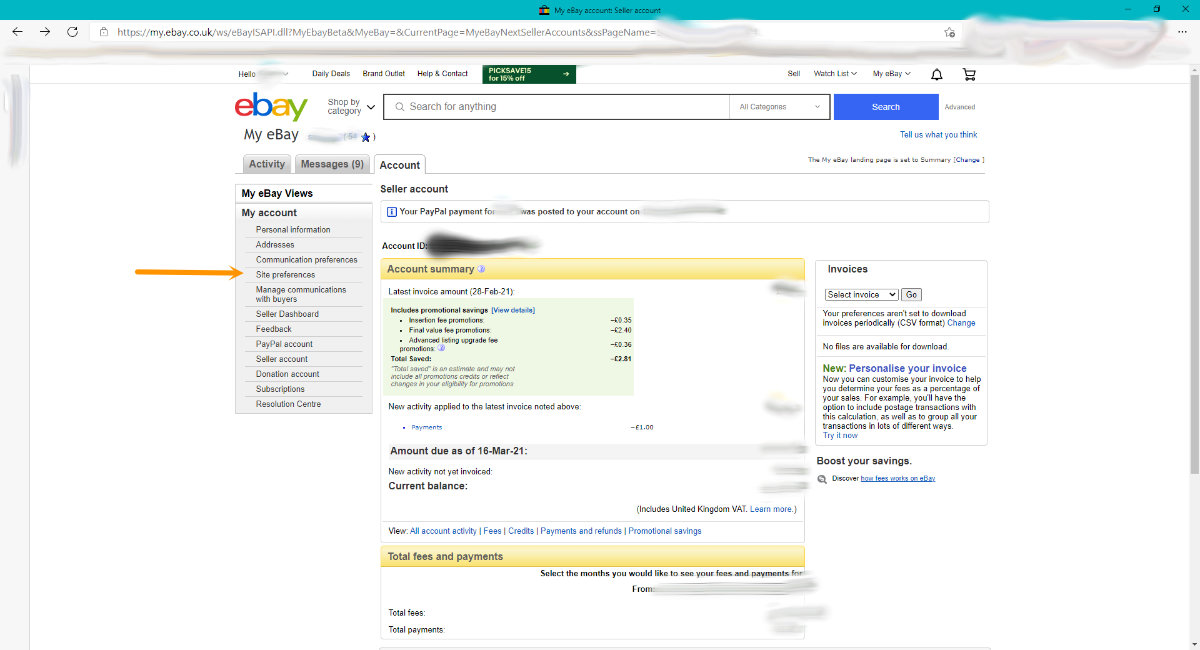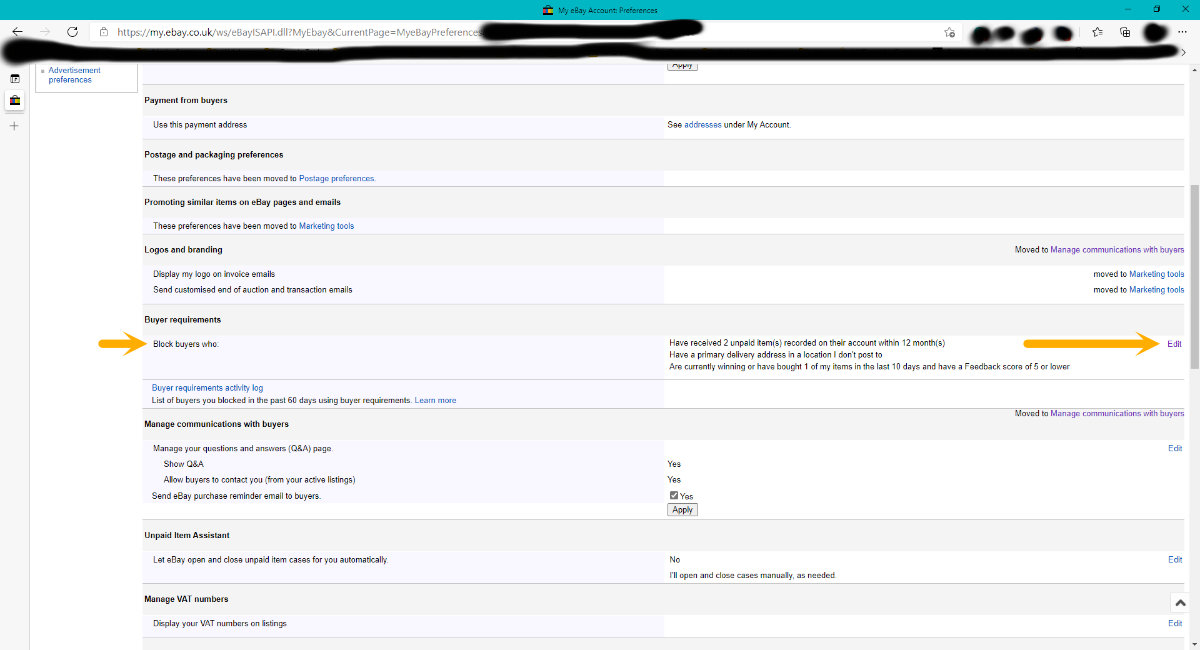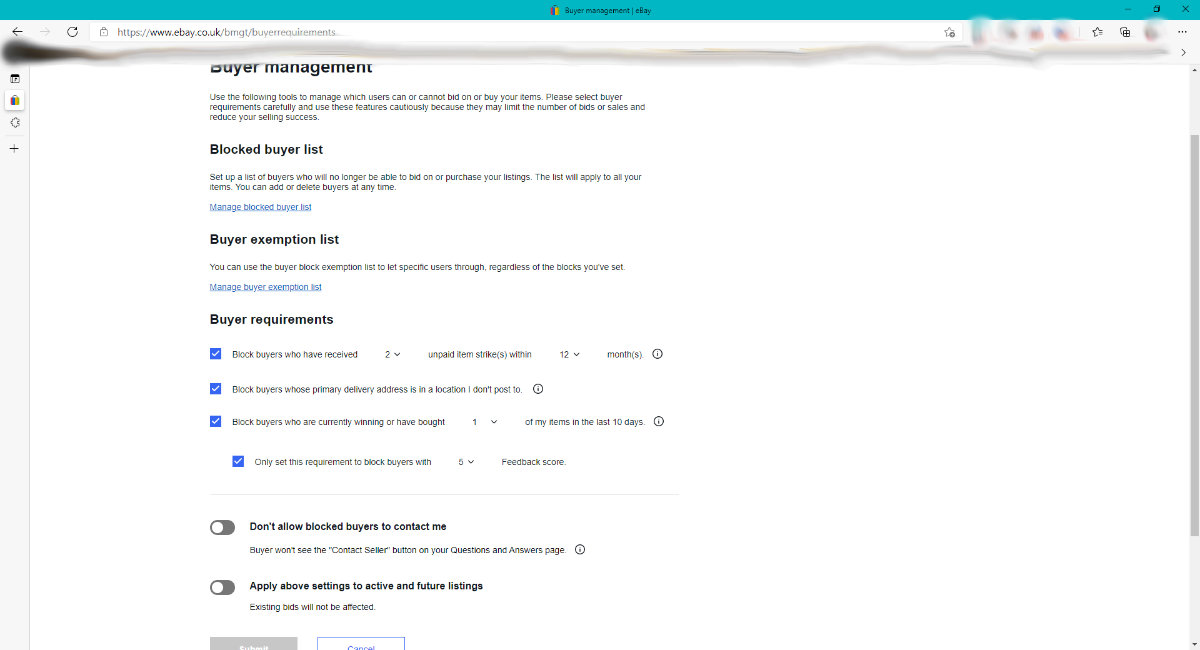Selling Laptops On eBay
If you’re wondering about selling laptops on eBay and whether it’s safe or not, then the short answer is no, it’s not particularly safe. This is purely subjective opinion, and although I’ve sold a few laptops on eBay, I wouldn’t recommend it…

Last Updated: January 11th, 2022
By: Steve
Contents
If you’re wondering about selling laptops on eBay and whether it’s safe or not, then the short answer is no, it’s not particularly safe. This is purely subjective opinion, and although I’ve sold a few laptops on eBay, I wouldn’t recommend it unless you know exactly what you’re doing and can afford to risk losing the value of the laptop. I’ll try to give you some pointers in this post, but at the end of the day, please remember I do not recommend selling high value items on eBay unless you can honestly afford to lose the money.
It should also be noted that I’m coming from the angle of a private seller, not a business seller. It’s very different if you’re a business seller, although one of the anecdotal cases I’m going to highlight that went very wrong is in fact a business seller. But nevertheless, this post is coming from the angle of a private seller.
eBay is great for selling lower value items that you find in the loft, or things that you no longer use and want to free up a bit of cash to replace (in my case with some other tat that will clutter the room up). But high value items are fraught with danger.
Why Selling Laptops on eBay is Not Safe
eBay have a Seller Protection Policy which sounds all great and marvellous when you first hear about it. But you must look into it yourself before deciding the maximum value of an item you want to ship to someone.
eBay’s seller protection scheme mainly protects the seller from bad feedback from abusive or unreasonable buyers. It doesn’t properly protect the seller against semi-fraudulent returns made by the buyer. The video below highlights this risk as a seller quite nicely. It is quite long so I’ll summarize below;
Nic and Andrea are BIG eBay sellers. They’ve been doing it for years. And even they got caught out. The video is about a year old, so made sometime during lockdown in 2020 I suspect. They’ve had some feedback from eBay in a later video but it’s not really solved the problem.
Long story short, they sold an expensive item which wasn’t a laptop, but the same would hold true for buying and selling laptops on eBay. The buyer responded and gave positive feedback stating he’d received the item on time and in good condition and that he was very pleased. The buyer engaged a mechanic to fit the item (a headlight for a car) and shortly afterwards he wished to return the item because it was “defective”.
Nic and Andrea had proof the item was shipped in good condition. The third party mechanic broke the headlamp when trying to fit it. This should be obvious from the initial feedback from the buyer. Nevertheless, eBay ran Nic and Andrea through a whole set of pointless hoops before finding 100% in favour of the buyer and issuing a refund. The refund of course came straight from Nic and Andrea’s bank account and they were left with a broken item and out of pocket.
How To Make Buying And Selling Laptops On eBay Safer
It’s fair to say, and highlighted in the video, that Nic and Andrea could have only refunded 50% of the price of the item under eBay’s Seller Protection Policy. But what they weren’t told was that if they dispute the return, they will inevitably lose even after running around doing things like trying to get a crime report. And if they lose the appeal, the ability to only refund 50% is lost. A full refund will be issued.
So, if a buyer sends back a defective item the best thing to do as a seller is refund 50% of the value, otherwise you’ll have to refund the full amount.
eBay claim this is due to Distance Selling Laws in England. I doubt this is true but I am not a lawyer. It would also depend on the specifics of the claim. It’s just potentially not worth the aggravation. It’s worth noting that it may have been possible for Nic and Andrea to seek redress from the buyer through the Small Claims Court in the UK. I’m not sure if similar things exist elsewhere though (but they probably do).
Always Send Via Signature Required, Tracked Courier
A signature isn’t quite as easy at the moment as it used to be thanks to the Coronavirus pandemic. But that shouldn’t stop you from paying for insurance when sending something high value. The standard compensation from most couriers ranges from £20 ($30) to £50 ($75). To cover the replacement cost of the laptop you may need to pay extra for insurance cover.
Requesting a signature can help reduce fraud since someone will have to sign to say they received it. At the very least it shows your item was delivered and reduces the risk of the buyer saying it never turned up, or claiming you never sent it.
But bear in mind, courier insurance only covers you against the item being broken or lost in transit. It doesn’t cover you against the buyer breaking the item 10 days later and then wanting to send it back.
Take Lots Of Photos
This is not foolproof, but it will potentially help your case if a buyer wants to return a defective item that they’ve broken. It should definitely help if you need to make a claim against the courier you sent it with, or go via the small claims court.
Make sure serial numbers are shown on the photos so that the buyer cannot return a different item. If there’s distinctive markings or scratches on the laptop make sure these are shown too. If the item returned doesn’t have them, or has markings elsewhere this may help your case.
But ultimately, provided the buyer sends back something resembling your laptop, they’ll win. You’ll lost at least 50% of your laptop’s final value through a refund.
Disclose Any Defects In The Listing
Obviously, if you send a laptop that is somehow defective, whether that’s functionally or cosmetically, then you must declare that up front. It’s best if you can include pictures so there’s no confusion. If you don’t disclose the defects in the listing and the buyer wants to return the item, I would entirely agree with their decision. It’s a two way street. You can’t try to scam them and they shouldn’t try to scam you.
eBay themselves give some (fairly generic) instructions on selling laptops on their platform here. The final paragraph is the most pertinent when it comes to selling laptops on eBay and making sure you don’t end up on the wrong side of a buyer dispute.
Consider Local Pickup Only. Definitely Consider No International Shipping
You may reduce the risk of scam if you refuse to ship the product and make the buyer pick the item up. It’s not foolproof, but a lot of the scams occur because people can hide behind anonymity. Seeing the buyers face may help reduce this.
One thing I will never ever do with high value items is send overseas. I just won’t. I’ll include text in the listing that says something along the lines of ‘Please note, I will NOT send overseas. If you are not in the UK please do not bid‘. Of course, substitute ‘the UK’ for where-ever you are.
The advantage of local pickup only is that the buyer will have the opportunity to see and test the item and if there’s any issues they can be straightened out there and then or the buyer can refuse the item. This should reduce a significant proportion of risk of the deal going sour.
However, of course, you should consider whether you want a potential buyer turning up at your house and knowing where you live? I can’t really advise on this one, perhaps a public place that is mutually agreeable?
Setup eBay’s Buyer Restrictions
eBay gives you a certain degree of flexibility when you sell via their platform, to determine who you’re willing to sell to. There’s a common misconception among buyers that you must sell to me because I have rights. Well, yes, they do. But none of those rights say you must sell to them. Of course you can’t decide not to sell to them based on the colour of their skin or sexual preference as that would be discrimination. But you can decide their risk profile is too high based on a number of anonymised factors.
To have eBay automatically block certain accounts of low standing or higher risk from bidding on your items you’ll need to login to your eBay account. Then choose Account Settings underneath that very attractive picture of yourself when you click on ‘Hello Whoever’.

Then choose Site Preferences. This will take you to a screen as shown below, which will have the option labelled Buyer Requirements if you scroll down a little.

On the right hand side you’ll see a text link that says Edit. Click that and you’ll see a screen like the one below;

From there you can set a whole bunch of restrictions on who can even bid for your items. You can even block specific buyers from bidding on your items. If you have a restriction set but you know that a certain buyer will be fine you can exempt them specifically from the restrictions.
As you can see, you can block buyers who have a certain number of unpaid item strikes against them. This can help prevent bid-fraud, but won’t necessarily help you prevent a scam after you’ve sent the item.
One of the most important blocks you can place though is to block buyers who live or will want an item posted to a place you’ve not said you’ll ship to. To make sure you block international buyers you’ll need to make sure your listing doesn’t have the ‘International’ shipping option selected too.
Consider Alternative Selling Marketplaces
Much of the advice online suggests not selling laptops on eBay at all. Others suggest only selling what you can afford to lose. A second hand laptop worth £50 probably isn’t cause for a big scam warning. But a newer laptop that you might hope to fetch £500-£1000 or more is going to sting if you get scammed. And as mentioned above, eBay will not protect you from such scams.
There’s no way to prevent scammers completely – they’ll always find some new and unique way to catch the seller unawares. It should be remembered that of the thousands, or even millions of transactions that go through eBay’s platform each year, it’s likely that most go without a hitch.
I’ve been buying and selling on eBay for 20 or so years. In all that time I’ve only ever had 1 (yes, 1) item not turn up that the seller then disappeared and didn’t refund me on. And that was back in 2002.
I’ve sold loads of stuff and never had an issue either. But I’ve never sold expensive stuff.
But the risk is there, and the risk is real. You have to decide what level of risk you can tolerate and how badly it would affect you if it went wrong. Then decide if selling laptops on eBay is for you, or whether an alternative selling platform such as Gumtree, Facebook or a Classified Ad in your local shop window is a better solution for you.
Finally
Before shipping your laptop on eBay ensure you have fully wiped the hard drive and reinstalled the operating system. I’d recommend at least formatting the drive and reinstalling. If you have proper sensitive data then I probably wouldn’t need to be saying this, but if you do want to be sure your data is irretrievable you’ll need to do a military grade ‘wipe’ on the hard drive before re-installing the operating system. How to do that could be the subject of another post later if anyone wants it.
I hope this post has given you some things to think about before deciding whether eBay is the right platform to sell your expensive items. It’s not intended to be a ‘how to do it safely’ advice. It’s isn’t. It’s intended to make you think and decide if you can tolerate the risk. Things may go wrong and I am not liable if you follow everything in this post and things still go wrong (because they might). Nothing in this post should be considered legal advice. If you need that, find a lawyer, I’m not one.
Bottom line, I wouldn’t sell my expensive laptop on eBay – not after seeing how shabbily Nic and Andrea were treated by eBay. There’s no seller protection and the risk is too big. But little stuff. Sure, I’ll continue to sell little stuff still.
Disclaimer
This post is intended only to provide some insight into what can go wrong. It is not legal advice, or financial advice or indeed any advice at all. I take no responsibility for any losses you might incur by selling, or not selling, your expensive item online.
Featured Image by Joshua Woroniecki from Pixabay


